
Uses primary
- Subject:
- Social Science
- Material Type:
- Lesson
- Provider:
- Connecticut Humanities
- Provider Set:
- Teach It
- Date Added:
- 02/09/2023

Uses primary
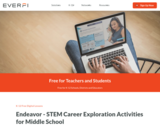
Through interactive problem-based scenarios, this digital resource takes students into the science, technology, engineering, and math behind their world, and introduces them to inspiring careers they never knew existed. This online program includes career profiles, a personalized action plan, diagnostic profile with recommended career paths and more.
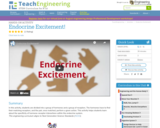
In this activity, students are divided into a group of hormones and a group of receptors. The hormones have to find their matching receptors, and the pair, once matched, perform a given action. This activity helps students learn about the specificity of hormone-receptor interactions within the endocrine system.
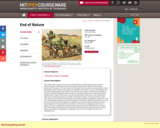
A brief history of conflicting ideas about mankind's relation to the natural environment as exemplified in works of poetry, fiction, and discursive argument from ancient times to the present. What is the overall character of the natural world? Is mankind's relation to it one of stewardship and care, or of hostility and exploitation? Readings include Aristotle, The Book of Genesis, Shakespeare, Descartes, Robinson Crusoe, Swift, Rousseau, Wordsworth, Darwin, Thoreau, Faulkner, and Lovelock's Gaia. This subject offers a broad survey of texts (both literary and philosophical) drawn from the Western tradition and selected to trace the growth of ideas about nature and the natural environment of mankind. The term nature in this context has to do with the varying ways in which the physical world has been conceived as the habitation of mankind, a source of imperatives for the collective organization and conduct of human life. In this sense, nature is less the object of complex scientific investigation than the object of individual experience and direct observation. Using the term "nature" in this sense, we can say that modern reference to "the environment" owes much to three ideas about the relation of mankind to nature. In the first of these, which harks back to ancient medical theories and notions about weather, geographical nature was seen as a neutral agency affecting or transforming agent of mankind's character and institutions. In the second, which derives from religious and classical sources in the Western tradition, the earth was designed as a fit environment for mankind or, at the least, as adequately suited for its abode, and civic or political life was taken to be consonant with the natural world. In the third, which also makes its appearance in the ancient world but becomes important only much later, nature and mankind are regarded as antagonists, and one must conquer the other or be subjugated by it.
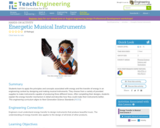
Students learn to apply the principles and concepts associated with energy and the transfer of energy in an engineering context by designing and making musical instruments. They choose from a variety of provided supplies to make instruments capable of producing three different tones. After completing their designs, students explain the energy transfer mechanism in detail and describe how they could make their instruments better.
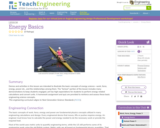
Demos and activities in this lesson are intended to illustrate the basic concepts of energy science -- work, force, energy, power etc. and the relationships among them. The "lecture" portion of the lesson includes many demonstrations to keep students engaged, yet has high expectations for the students to perform energy related calculations and convert units as required. A homework assignment and quiz are used to reinforce and assess these basic engineering science concepts.
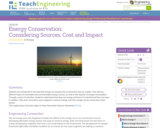
Students are introduced to the idea that energy use impacts the environment and our wallets. They discuss different types of renewable and nonrenewable energy sources, as well as the impacts of energy consumption. Through a series of activities, students understand how they use energy and how it is transformed from one type to another. They learn innovative ways engineers conserve energy and how energy can be conserved in their homes.
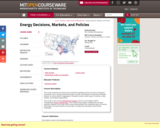
This course examines the choices and constraints regarding sources and uses of energy by households, firms, and governments through a number of frameworks to describe and explain behavior at various levels of aggregation. Examples include a wide range of countries, scope, settings, and analytical approaches. This course is one of many OCW Energy Courses, and it is a core subject in MIT's undergraduate Energy Studies Minor. This Institute-wide program complements the deep expertise obtained in any major with a broad understanding of the interlinked realms of science, technology, and social sciences as they relate to energy and associated environmental challenges.
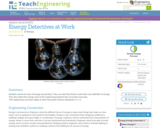
Students search for clues of energy around them. They use what they find to create their own definition of energy. They also relate their energy clues to the engineering products they encounter every day.
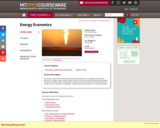
This course explores the theoretical and empirical perspectives on individual and industrial demand for energy, energy supply, energy markets, and public policies affecting energy markets. It discusses aspects of the oil, natural gas, electricity, and nuclear power sectors and examines energy tax, price regulation, deregulation, energy efficiency and policies for controlling emission.
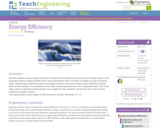
This Lesson provides two different activities that require students to measure energy outputs and inputs to determine the efficiency of conversions and simple systems. One of the activities includes Lego motors and accomplishing work. The other investigates energy for heating water. They learn about by products of energy conversions and how to improve upon efficiency. The teacher can choose to use either of these or both of these. The calculations in the water heating experiment are more complicated than in the Lego motor activity. Thus, the heating activity is suitable for older students, only the Lego motor activity suitable for younger students.
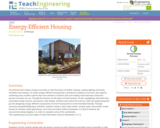
We all know that it takes energy to provide us with the basics of shelter: heating, cooling, lighting, electricity, sanitation and cooking. To create energy-efficient housing that is practical for people to use every day requires combining many smaller systems that each perform a function well, and making smart decisions about the sources of power we use. Through five lessons on the topics of heat transfer, circuits, daylighting, electricity from renewable energy sources, and passive solar design, students learn about the science, math and engineering that go into designing energy-efficient components of smart housing that is environmentally friendly. Through numerous design/build/analyze activities, students create a solar water heater, swamp cooler, thermostat, model houses for testing, model greenhouse, and wind and water turbine prototypes. It is best if students are concurrently taking Algebra 1 in order to complete some of the worksheets.
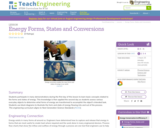
The students participate in many demonstrations during the first day of this lesson to learn basic concepts related to the forms and states of energy. This knowledge is then applied the second day as they assess various everyday objects to determine what forms of energy are transformed to accomplish the object's intended task. The students use block diagrams to illustrate the form and state of energy flowing into and out of the process.
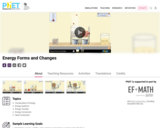
This simulation lets learners explore how heating and cooling adds or removes energy. Use a slider to heat blocks of iron or brick to see the energy flow. Next, build your own system to convert mechanical, light, or chemical energy into electrical or thermal energy. (Learners can choose sunlight, steam, flowing water, or mechanical energy to power their systems.) The simulation allows students to visualize energy transformation and describe how energy flows in various systems. Through examples from everyday life, it also bolsters understanding of conservation of energy. This item is part of a larger collection of simulations developed by the Physics Education Technology project (PhET).
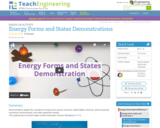
Demonstrations explain the concepts of energy forms (sound, chemical, radiant [light], electrical, atomic [nuclear], mechanical, thermal [heat]) and states (potential, kinetic).
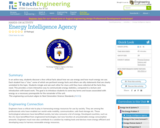
In an active way, students discover a few critical facts about how we use energy and how much energy we use. Each student has a "clue," some of which are pertinent energy facts and others are silly statements that are clearly unrelated to the topic. Students mingle and ask each other for clues until they have collected all the facts they need. This provides a more interactive way to communicate energy statistics, compared to a lecture and introduction with board work. The goal is to introduce students to some key terms and issues associated with energy as a necessary prerequisite for the remainder of the unit.

Students utilize data tables culled from the US DOE Energy Information Agency to create graphs that illustrate what types of energy we use and how we use it. An MS Excel workbook with several spreadsheets of data is provided. Students pick (or the teacher assigns) one of the data tables from which students create plots and interpret the information provided. Student groups share with the class their interpretations and new perspectives on energy resources and use.
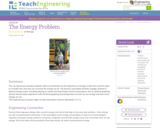
This six-day lesson provides students with an introduction to the importance of energy in their lives and the need to consider how and why we consume the energy we do. The lesson includes activities to engage students in general energy issues, including playing an award-winning Energy Choices board game, and an optional graphing activity that provides experience with MS Excel graphing and perspectives on how we use energy and how much energy we use.

Several activities are included to teach and research the differences between renewable and non-renewable resources and various energy resources. The students work with a quantitative, but simple model of energy resources to show how rapidly a finite, non-renewable energy sources can be depleted, whereas renewable resources continue to be available. The students then complete a homework assignment or a longer, in-depth research project to learn about how various technologies that capture energy resources for human uses and their pros and cons. Fact sheets are included to help students get started on their investigation of their assigned energy source.
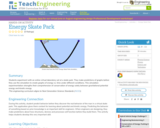
Students experiment with an online virtual laboratory set at a skate park. They make predictions of graphs before they use the simulation to create graphs of energy vs. time under different conditions. This simulation experimentation strengths their comprehension of conservation of energy solely between gravitational potential energy and kinetic energy